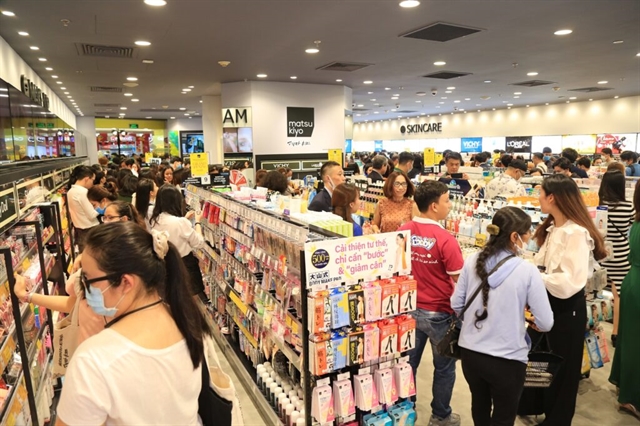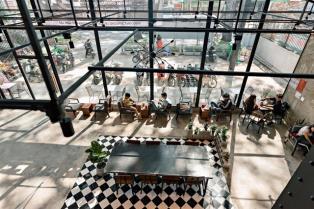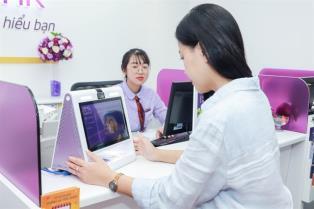Matsumoto Kiyoshi Holding Company, Japan’s leading retail drug chain, began its foray into Viet Nam with a flagship pharmaceutical and cosmetic store it opened in HCM City last month.

Matsumoto Kiyoshi Holding Company, Japan’s leading retail drug chain, began its foray into Viet Nam with a flagship pharmaceutical and cosmetic store it opened in HCM City last month.
It followed two years of study of the Vietnamese consumer behavior.
The 273sq.m store stocks more than 6,000 items made by famous brands not only from Japan but also many other countries, including Kose, Anessa, Kanebo, Eucerin, Argelan, and Bioderma.
Hiroki Miyaoka, managing director of Matsumoto Kiyoshi Vietnam, said at the opening ceremony that another 10 - 15 such stores are likely to be opened in Viet Nam in the next five years.
The company has set itself a target of becoming a chain of cosmetics stores with affordable products and promotions that people in Viet Nam would want to visit once a week.
The company struck up a joint venture with Lotus Food Group to enter Viet Nam in March this year with a total capital of VND31.5 billion (US$1.35 million) of which it holds 51 per cent and Lotus holds 48.87 per cent.
The remaining 0.13 per cent is held by Lotus’ president, Le Van May, who is also the president of Matsumoto Kiyoshi Vietnam.
The Japanese giant’s entry further underlines foreign cosmetics firms’ dominance of the promising Vietnamese cosmetics market, with famous brands being sold at most malls across the country.
The most prominent retailers are Watsons, Dairy Farm Group’s Guardian, Beauty Box, and now Matsumoto Kiyoshi.
Hong Kong-based Watsons opened its first outlet in January last year and announced plans for 50 more in the next few years.
The Watson store in downtown HCM City also has a make-up counter where shoppers can try out products and get make-up advice.
“Watsons is looking forward to building long-term relationships with Vietnamese customers and helping them look good and feel great," Rod Routley, regional managing director for Asia at A.S. Watson Group, said.
The company has 7,200 stores across Asia and Europe, with Viet Nam being its 13th market, according to Nikkei.com.
It plans to offer both offline and online services to reach young, tech-savvy Vietnamese customers.
Guardian, a retail chain that sells health and beauty products and belonging to Hong Kong-based Dairy Farm Group, opened its first store in HCM City in 2011, and now has 101 across the country.
South Korea’s Beauty Box distributes more than 50 of the top cosmetic brands in its country in Viet Nam, selling make-up and skin, hair and body care products since late 2018.
Viet Nam fully opened its retail market to foreign companies in 2009, three years after joining the World Trade Organization.
Its growing ranks of millennials and rising incomes have convinced foreign retailers including cosmetics distributors that it is time for them to foray into the market.
According to Matsumoto Kiyoshi, the Japanese firm analysed data of Vietnamese customers who shopped at pharmaceutical and cosmetics stores in Japan in 2017 and 2018, and found that the number had skyrocketed by over 150 per cent from previous years.
Viet Nam’s expanding affluent class and growing taste for foreign products, especially Japanese, prompted the company to enter the market, it said.
According to the Vietnam Association of Essential Oils, Aromatherapy and Cosmetics, the country’s cosmetics market has grown at an annual rate of 30 per cent in recent years as the rapid economic growth helped improve incomes.
The middle class in the country is forecast to reach 33 million by 2020. Millennials make up 30 per cent of the population, and tend to be more conscious of health and beauty care than earlier generations and are willing to pay a premium for quality products and services.
Imports of cosmetics and beauty products were worth US$1.1 billion in 2016, a threefold increase from 2011, and expected to reach $2.2 billion by 2020.
Imports accounted for 90 per cent of the market.
The beauty and healthcare market now is worth around VND86 trillion ($3.7 billion), the association said.
It is estimated that around 90 per cent of cosmetics firms in Viet Nam are distribution agents for foreign brands.
Besides the growing affluence, the country’s beauty industry has also become more attractive to foreign brands because the Government has signed free trade agreements with many countries and blocs around the world under which import duties on beauty care goods have been cut to 5 per cent or even abolished.
Besides, the digital world opens new doors to players entering the market.
Easier access to the internet, especially via mobile devices, enables Vietnamese consumers to keep abreast of beauty trends faster, research product information more easily and shop conveniently online, global data company Kantar Worldpanel said.
Eighty per cent of incremental spending on beauty products comes from online shopping, according to a omnichannel report of Digitalcommerce360.com.
Competition
Viet Nam’s cosmetics market is still small compared to others in the region such as Thailand, but has been growing rapidly.
This explains the entry of many of the world’s leading cosmetics brands, but this has also created fierce competition in the market.
A report by the HCMC Cosmetics Association said South Korean brands have a 30 per cent market share, European countries account for 23 per cent, Japan for 17 per cent, Thailand for 13 per cent, and the US for 10 per cent.
Watsons recently opened its third store in Viet Nam.
Besides retailing many famous brands like Natio, Anessa, Paula’s Choice, DHC, and Vichy, the company has also focused on offering make-up services.
It is going about methodically, improving its tech platform to strengthen online sales, analysing market data and building warehouses in the country.
Guardian, known as a redoubtable rival to Watsons, has rapidly opened stores, increasing its total number to 101 to date, which has helped it gain a significant competitive advantage.
But analysts said while the foreign cosmestics retailers might be world-famous healthcare and cosmetics brands, they are still new in the Vietnamese market and need more time to build trust among consumers.
Besides, the model of chain stores selling health and beauty care products has yet to become common and Vietnamese need more time to get used to it, they said.
Wind power projects to be considered under new plan
The Ministry of Industry and Trade has decided to stop incorporating new wind power projects in the national electricity plan for 2015-20.
Many new projects had been proposed, but then a new national power development plan (also called power development master plan 8) for the 2021-30 with a vision to 2045 is almost complete and ready for submission to the Government for approval.
The ministry has therefore asked cities and provinces soon to make a list of their proposed projects and submit it for the Government’s consideration if they want them added to the power development master plan 8.
The Government’s numerous incentives to encourage wind power development have been a magnet for investment in this energy segment.
As a result, since 2018 the industry ministry has received several proposals for projects with a combined capacity of 50,000 MW.
It forecasts electricity consumption to increase by around 8 per cent annually between 2021 and 2030.
Output is expected to reach 138,000 MW by 2030, with 27 per cent coming from coal-fired plants, 19 per cent from oil-fired fuels, 18 per cent from hydropower, 28 per cent from wind and solar power, and the remainder from other sources including imports.
The power development master plan 8 seeks not only to meet the country’s electricity demand but also create a strong association between Viet Nam and other countries in the region to create a competitive power market. — VNS





